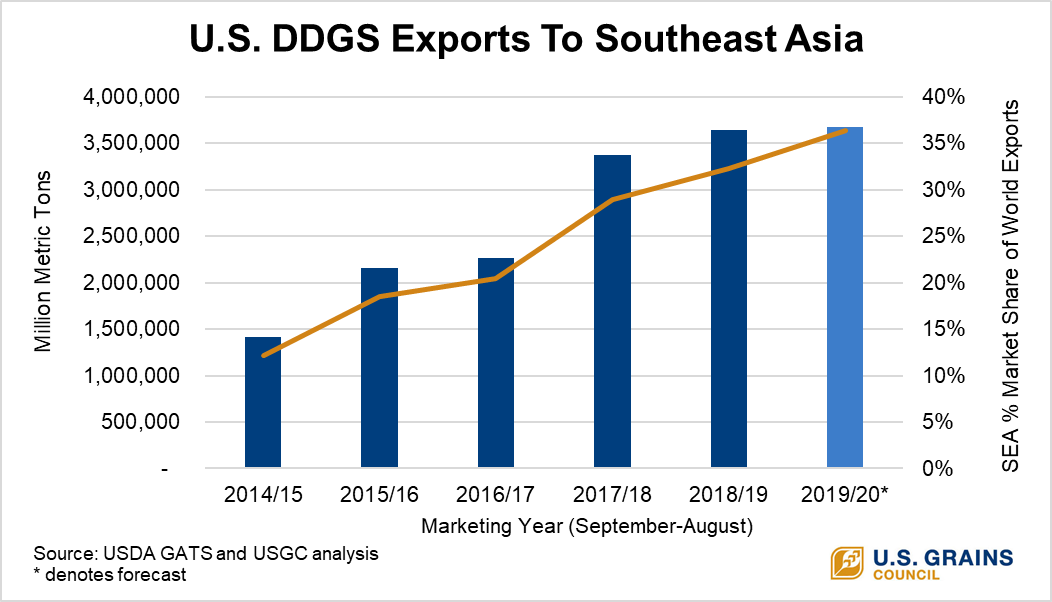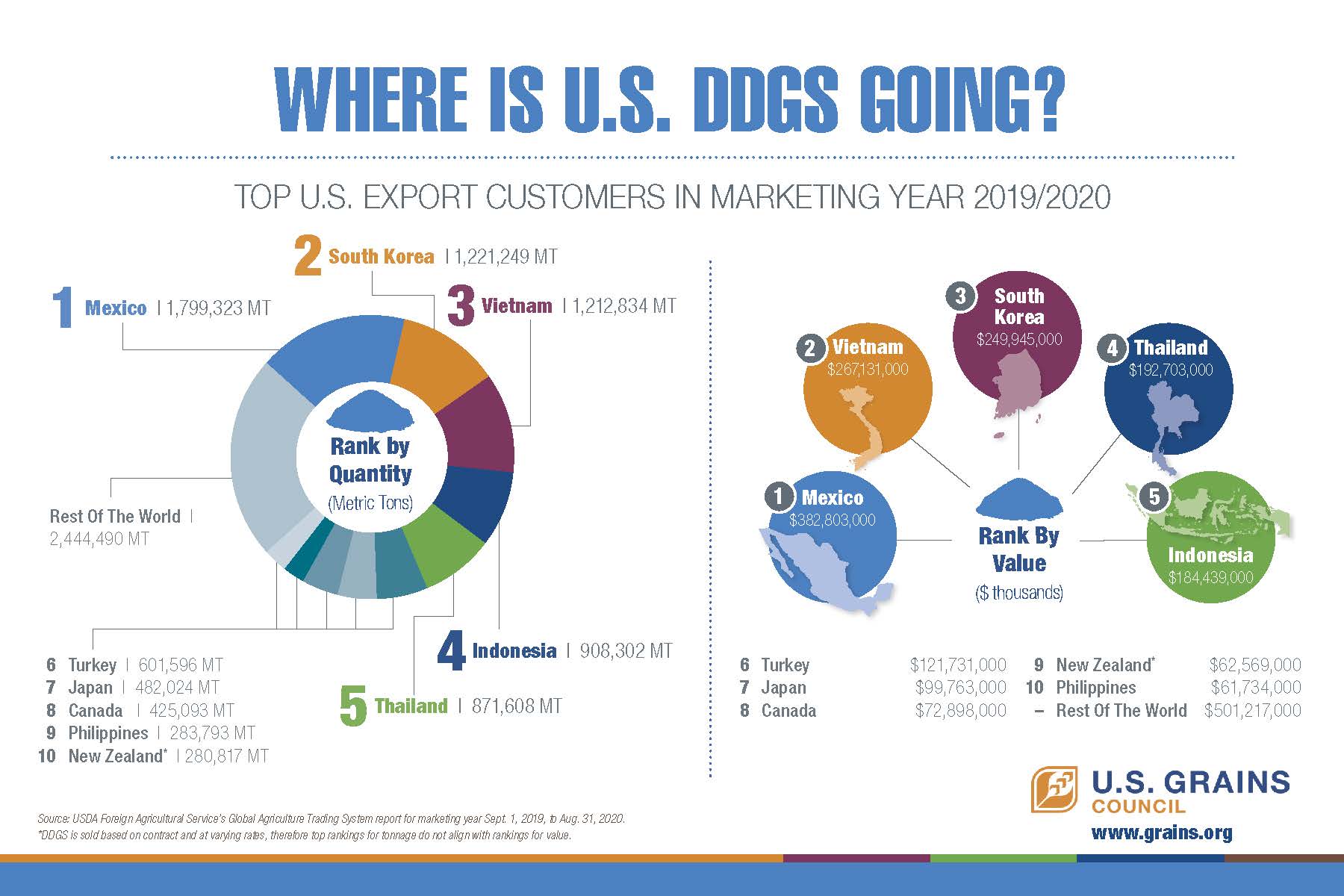
Southeast Asia is one of the fastest-growing markets in the world, representing one-third of all U.S. distiller’s dried grains with solubles (DDGS) exports – a market share that continues to grow according to data from the U.S. Department of Agriculture (USDA) and the U.S. Grains Council (USGC).
Vietnam currently ranks as the third-largest buyer of U.S. DDGS globally at nearly 973,000 tons. With the help of the Council, grain importers in this market shifted in early 2020 from purchasing containers, which were in short supply, to ordering bulk vessels to ensure an uninterrupted flow of feed ingredients – a practice that is still going on today.
Indonesia was the fourth-largest overall buyer at 792,000 tons for the marketing year. The Council has expanded engagement in that market to reach more broiler and layer producers spread over the country’s more than 17,000 islands. Concentrated programs and feed formulation seminars demonstrated how these producers could reduce overall feed costs and see additional benefits for early laying hens. As a result, participants began first-time DDGS trials and increased DDGS inclusion levels, upping overall demand for the product.
 Despite major phytosanitary constraints, Thailand imported 688,000 tons of U.S. DDGS in the marketing year, a 20 percent increase from the previous year and making the country the fifth-largest overall DDGS market. The Council is working on adding to demand from the poultry industry with a focus on developing targeted technical education and trade servicing programs for aquaculture. Seminars in January 2020 focused on the inclusion of DDGS in shrimp, finfish and marine species. Raising inclusion rates even slightly for these species could result in more than 275,000 tons in additional demand for U.S. DDGS across the region.
Despite major phytosanitary constraints, Thailand imported 688,000 tons of U.S. DDGS in the marketing year, a 20 percent increase from the previous year and making the country the fifth-largest overall DDGS market. The Council is working on adding to demand from the poultry industry with a focus on developing targeted technical education and trade servicing programs for aquaculture. Seminars in January 2020 focused on the inclusion of DDGS in shrimp, finfish and marine species. Raising inclusion rates even slightly for these species could result in more than 275,000 tons in additional demand for U.S. DDGS across the region.
The Philippines and New Zealand are also in the top 10 markets for DDGS. The Philippines set a new record for U.S. DDGS imports in 2019/2020, increasing purchases 17.1 percent to nearly 285,000 metric tons. New Zealand increased purchases by 38.9 percent to nearly 281,000 metric tons.

